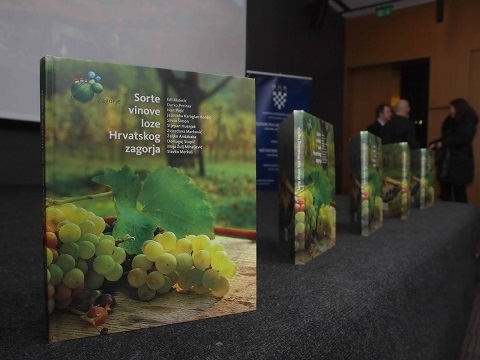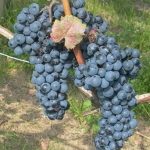
Possibly its last vine was found in Krapina, next to the birth home of Ljudevit Gaj
This variety has the largest influence on the development of varieties in middle and western Europe, with large interest in its origin coming after a 1999 publication in the most famous scientific magazine in the world, Science, which presented it as being a parent, together with Pinot, of 16 French varieties, among them Chardonnay. Further investigation confirmed it as a parent of more than 80 varieties in the world. So begins the text of Old Croatian Belina in the book “Croatian Indigenous Varieties of Grape Vine” from 2015, presenting the richness of Croatian vineyards. Out of 125 described original varieties, wine lovers have often tasted Plavac Mali Black (described in the book are also Red, Grey, Great Plavac…), Istrian Malvasia White (there are also red, Dubrovnik Malvasia, Malvasia Del Chianti – which is Rukatac or Maraština…), Pošip White (also Pošip Black) and Istrian Black Terrano, famous for the conflict with Slovenia over its name (there is also a Terrano White). Wines from Old Croatian Belina has been tasted by only a few. It later blended into a group of similar varieties called the joint name Belina and disappearing almost completely by the end of the 20th century.
Possibly its last vine was found in Krapina, next to the birth home of Ljudevit Gaj. It was replanted and can now be found in around 5.000 vines. Last year around 17 thousand vines for production were approved, so we can expect more vines. It was used before for light wines in everyday use, and the book about Croatian varieties states that using modern technology can produce wines with accented freshness and drinkability, unimposing aromas and lower strength, which are very much in demand today. From the existing grapes individual winemakers make wines, but each in their own way. Hence there won’t be confirmation of the assumption of good wines from Old Croatian Belina until experimental vinification is placed under expert control. But the variety is more important due to its descendants than the wines it can produce. Besides Chardonnay, it is a parent o Moslavac, called Furmint by Austrians, Germans and Hungarians, Šipon by Slovenians, Pušipel in Međimurje, then Frankovka, while crossing with Traminer and wild vines produced Rhine Riesling. Along with Traminer and Pinot Nero it belongs with old varieties, being called the Zagorje Casanova due to its many offspring. It is also called the Belina Great White, in the world known by the German name Heunisch Weisser or French Gouais Blanc. The discovery how old this variety is has turned some attention to Croatia, while among the authors who published it was also Carole Meredith from the Californian University Davis.
Together with Edi Maletić and Ivan Pejić, professors from the Zagreb Faculty of Agronomics, she proved that the famous Californian Zinfandel is actually the old Croatian variety Crljenak Kaštelanski or Tribidrag. They came to learn this after an initiative from Californian winemaker Miljenko Mike Grgić, who was reminded by Zinfandel of Plavac Mali. Genetics proved they are not the same variety, but that Zinfandel, or Crljenak and Šolta Dobričić the parents of Plavac. This discovery prompted many American wine lovers to visit Croatia as the home of their wine pride. Such stories of Croatia are credited to geneticists and ampelographers (grape vine variety experts). Winemakers are yet to offer to the public a new wine from the Old Croatian Belina, but also a great wine from Crljenak or Tribidrag. What we have tasted so far gives a hint of large potential. But the vineyards are still young. When they come of age, hopefully the wines will reach the glory of the best Plavac wines.
For the original and more from Suhi u Čaši blog on wine, click here.











